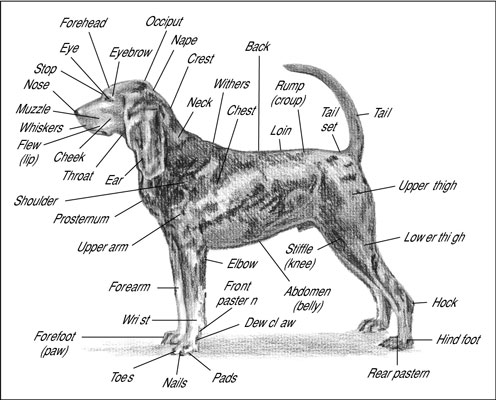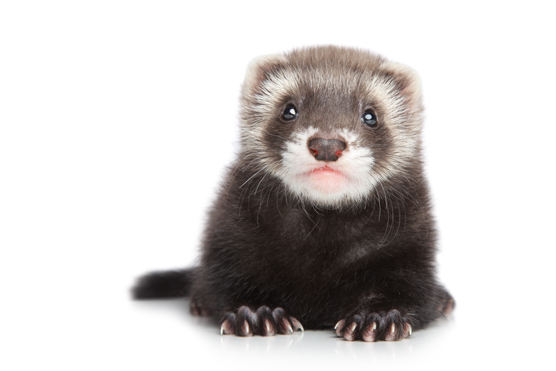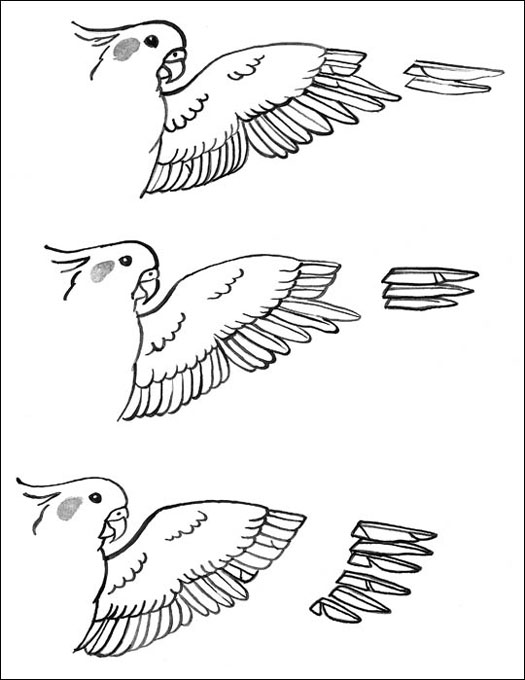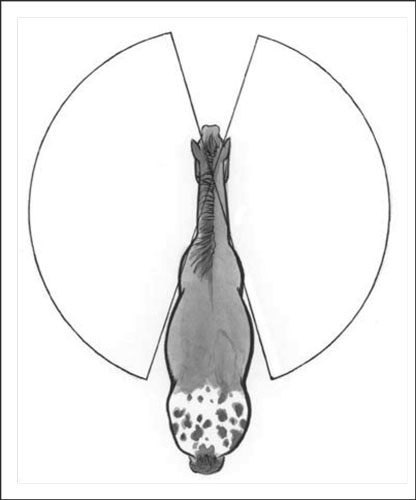約克夏犬:AKC 品種標準
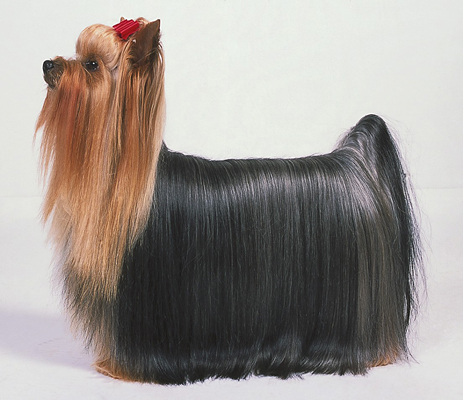
深入了解約克夏犬AKC官方品種標準,包括體型、毛色、外表特徵和展示要求。專業解析幫助您全面認識這個可愛的玩具犬品種。
哈士奇是多用途犬,興趣廣泛。以下是您可能喜歡嘗試的一些犬類活動的概述。如果您想了解更多信息,請諮詢您當地的養犬俱樂部、品種俱樂部或美國養犬協會。歡迎所有人!
這份清單並沒有窮盡您可以用西伯利亞哈士奇犬做的各種事情。冒險僅限於您的想像力。
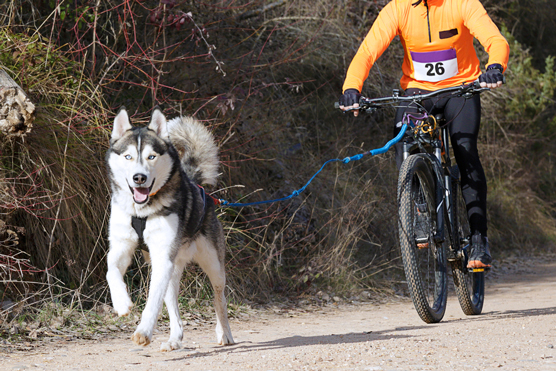
©拉奎爾佩德羅薩/Shutterstock.com
犬類敏捷性是發展最快的犬類運動之一,可為您和您的愛犬提供出色的鍛煉。從本質上講,敏捷性是一場跨越 14 到 16 個障礙(新手級別)的計時比賽,包括跳躍、隧道、坡道、蹺蹺板、暫停台和編織桿。速度和準確性都很重要。
你的狗依靠你的暗示和肢體語言來指導他完成課程。敏捷性對所有品種和體型開放,敏捷、快速、精力充沛的西伯利亞犬是一個優秀的候選人(在您說服他的獨立精神遵循您的指示而不是自己做出決定之後)。西伯利亞人可以在這項運動中表現出色——特別是如果你使用款待和積極的鼓勵——因為他們擁有完美的體型和體型來參加比賽。你只需要讓他相信這很有趣。(提示:如果您不相信我,請查看一些 YouTube 視頻。)由於西伯利亞人喜歡跑到他想去的任何地方,因此您必須首先對您的西伯利亞人進行服從工作。
因為西伯利亞人往往有註意力不集中的問題,除非該區域被完全圍起來,否則永遠不要嘗試在領先時敏捷 - 即使他已經參加了服從課程。
在您附近的狗俱樂部參加敏捷課程,開始敏捷。在您開始之前,您的西伯利亞犬應該已經一歲了並且已經完全發育。(官方 AKC 比賽僅對 15 個月或以上的狗開放。)我強烈建議您的狗在開始之前進行徹底的獸醫檢查。他也需要接種疫苗。
許多這些俱樂部已經擁有合適的設備。如果您的西伯利亞人變得敏捷,您可以購買自己的障礙物(當然前提是您的後院有空間)。你需要每天花大約 20 分鐘來練習,因為西伯利亞人的大腦裡充滿了詭計多端的計劃,無法記住像“暫停!”這樣的簡單命令。面對現實——停下來不是他們的天性。
如果您屬於擁有公開設備的狗俱樂部或狗公園,您實際上不需要任何東西。但是,如果您願意,您可以開始構建自己的障礙和步行,或者您可以輕鬆地在線購買它們——並且逐漸地——您不需要一次購買所有東西。
準備好騎行了嗎?拿出你的山地自行車,抓住你的哈士奇(或哈士奇)!騎自行車給人一種沒有雪的雪橇的感覺,讓你的哈士奇發揮他作為拉車者的天賦。在這項運動中,您騎在陸地上,讓狗做這項工作,儘管您可以隨時通過踩踏來提供幫助。你可以在美國找到一些這項運動的比賽(儘管歐洲有更多),而且比賽通常更注重樂趣而不是勝利。請注意,您和您的狗必須處於最佳狀態!
您的狗需要能夠遵循口頭提示,因此必須具有強大的服從背景。常用命令有:
使用舊時的命令,哎呀!(“右轉”)然後哇!(“左轉”),對於更高級別的敏捷犬來說可能很有趣。
您首先需要先步行訓練您的哈士奇犬,然後再開始騎自行車(移動非常緩慢)。不要在混凝土上進行這項運動,因為它會殺死你的哈士奇的腳。即使是堅硬的污垢也可能是一個問題。沙質或軟土最好。
確保為這項運動攜帶急救箱和充足的水。練習時要經常檢查哈士奇的腳。如果您對這項運動充滿熱情,那麼您的哈士奇應該穿短靴。
除了一兩隻狗和自行車外,您還需要以下設備:
另一項類似於自行車運動的運動是腳踏車或滑板車。
Canicross,也被稱為CaniX,與您的狗一起慢跑——但不牽繩。是的,哈士奇不可靠。然而,令人心曠神怡的結是有是鉛-它只是沒有連接到你的手。它系在皮帶上,可以讓狗拉你,這對哈士奇來說是一項完美的運動。
Canicross 不是一項適合心臟或肢體虛弱者的運動。然而,據估計,專職慢跑者每英里可以縮短 30 秒,因為您是由狗驅動的!您的哈士奇已經準備好在 12 到 18 個月大的時候進行 Canicross;在那之前你可以開始輕度訓練。
儘管騎自行車和滑雪歸根結底是狗比賽,但 Canicross 是人類的比賽,即使狗得到了真正的鍛煉,尤其是當他拉你上坡時。
您需要以下裝備才能參加比賽:
使用與自行車騎行相同的命令(請參閱上一節)。當您對跑步感到舒適時,您可以弄清楚如何使用您的體重,向後傾斜以減慢您的狗的速度。
Carting, also referred to as drafting, is an activity in which your Husky (or Huskies) pull two- or four-wheeled vehicles. It’s a summertime version of mushing/sledding, and as the name suggests, it’s done with a cart instead of sled.
Carting can be done competitively or just for fun. Competitions have separate events for dogs pulling people and those pulling equipment. Each event uses a different style of cart. In carting you can use voice commands to control your Husky, or, if children are in the cart, you can lead him. Commands in carting are the same as for bikejoring and canicross, with special emphasis on “stop.” If there is one thing any dog needs to learn, it’s to stop doing whatever he’s doing when told.
A two-wheeled vehicle is technically called a cart or a sulky. The four-wheeled type is a wagon. A wagon can carry more weight, but perhaps its greatest advantage is that it supports itself and isn’t bearing down on the dog the way a cart is. Carts must be balanced extremely carefully to avoid injuring your Husky.
In carting competitions (both this type and the type in the next section), dogs have to pass ten tests:
Some competitions include a freight haul of half a mile or so to test endurance.
You aren’t limited to one Husky in carting — two Huskies side by side make excellent partners! Just make sure your Husky is old enough. No dog under 18 months should be allowed to pull anything heavier than himself.
Dogs can pull an amazing amount of weight with ease, often three or four times their own weight. All breeds of dog, large and small, are able to enjoy this sport, but Huskies are especially suitable.
As with every dog sport, obedience training is a must. An untrained dog running amuck with a cart attached isn’t something to be taken lightly.
Although carting can be great fun, it has a serious side. Service dogs able to cart can be of great assistance to their owners, carrying heavy items you can’t carry, like bags of mulch.
Because Huskies are among the world’s most beautiful dogs, who wouldn’t want to show them off in conformation (otherwise known as a dog show)? Yes, a dog show is a beauty pageant (a combination of Miss America and Survivor) for dogs, in which a judge compares your dog to the ideal (as described in the breed standard).
Your Husky competes against other Huskies. If he is chosen Best of Breed, then he’ll go on to compete and against other dogs in the Working Group for more honors. If he wins that competition, he is up for the all-important Best in Show title, competing against other group winners. It’s hilarious watching a Yorkie competing against a Great Dane, but that’s the way it goes, and as often as not, the little dog wins.
Dogs entering conformation shows must be registered with the organization sponsoring the event, normally the American Kennel Club or the United Kennel Club. In the United Kingdom, it’s simply The Kennel Club, as if there were no other.
If the only experience you have of conformation is watching the Westminster dog show on TV, you may be sucked into the glitz and glamor of the whole thing. Most dog shows, however, are much lower-key, family affairs. To get started, all you need is the right dog. And that’s where things can be dicey. Conformation is a rather unforgiving affair: an ear that is incorrectly set, a kink in the tail, or an improper bite can doom your precious Siberian to the also-rans of dogdom. Conformation is also a very subjective affair. Many dog shows occur in weekend clusters with a different judge each day. I’ve seen a dog who placed first on one day in front of one judge and end up without a ribbon in front of another judge on subsequent days against the same competition, all of whom performed in pretty much the same way.
In any case, a good breeder should be honest with you about a dog’s show prospects. Not every puppy in a litter is of show quality, which may not be apparent for a few months. If you want to show, talk to the breeder before you get a puppy. She’ll be happy to work with you in picking the right dog and, in all probability, be a coach and mentor to you. A responsible breeder won’t sell you a non-show quality dog for showing because doing so would reflect badly on her.
One technicality that many pet owners object to: Conformation dogs aren’t usually allowed to be shown if they’re neutered/spayed because the original purpose of a dog show was to promote breeding stock. Although many have complained about this rule, it still stands. (All other events, such as agility and obedience, are open to neutered/spayed dogs.)
The best way to get started in this sport is to work with your breeder and your local kennel club, which may offer handling classes. Some people hire a professional handler to show their dogs for them, but there’s no reason to miss out on the fun. You can learn how to do it yourself. It’s not particle physics. (It’s a lot easier than agility, where nearly everyone handles their own dog.)
Experienced dog handlers know which judges tend to like which type of dog and choose their shows accordingly.
This sport started out as dock diving, but apparently diving dog sounds better. In any case, you still need a dock or a good approximation of one. (It should ideally be a pretty long dock, about 40 feet.) The North America Diving Dogs (NADD) organization offers events that may be held in conjunction with AKC dog shows, and the AKC recognizes NADD titles.
You stand at the edge of a dock and throw your Husky’s favorite toy as far as you can into the water. On your command, he races to the end of the dock, flings himself headlong into the water, and fetches the toy. (Don’t worry. You’re allowed to have someone hold your Husky for you.) The object is for him to leap as far as he can. Beginner dogs often jump just a couple of feet. The more experienced ones go 30 feet or more. (Dogs can compete for height or distance; the former is called air retrieve, and the dog attempts to knock the bumper, which is suspended over head into the water.)
All you need is a towel and a toy, although you’re allowed to outfit your dog with a life vest as well. Your dog should be at least 6 months old to compete.
AKC Obedience is a sport designed to showcase your Husky’s ability to follow specific commands and routines. The goal is to score 200 for a perfect score, but a score of 170 is considered qualifying. Obedience has many levels, but challenges that the dog must meet include the following:
Higher levels ask the dog to do broad jumps and high jumps, retrieve on command, use scent discrimination to find his handler’s item among a bunch of others, and other tricky maneuvers.
Obedience is a sport that pays off well beyond the show ring. Don’t confuse this competition with the ordinary obedience you should be treating your Husky, although it’s related. Obedience is a judged AKC event, developed in the 1930s. Unlike other dog sports that encourage your dog to run around like a crazy person, jumping into water and dragging you along by leash, obedience teaches your dog to sit and lie down on command and do all sorts of other lovely things, including jumping and retrieving.
Did I just hear you gulp? I don’t blame you. Huskies need a lot of work in the retrieving department. In this event, the judge gives orders for each element. All dogs are allowed to compete in obedience. The one caveat is that mixed breeds must be neutered first.
Dogs must be 6 months of age to compete. (AKC rules specify that blind dogs can’t compete.) Obedience tests are available at many levels, from Novice (beginner) to Utility (expert).
Huskies are independent thinkers and tend to resist being told what to do. That doesn’t mean you can’t excel in obedience with your Husky. It just may take more patience than you would need if you had, say, a Golden Retriever (they walk off with all the honors in this sport).
Sometimes called Rally Obedience or simply Rally-O, this competition used to be considered a kind of beginner’s obedience, but it’s now recognized as a sport on its own merit. Rally has no set course, unlike obedience, in which you follow a set pattern. In rally, you don’t know what to expect. The course generally isn’t known until about half an hour before the event.
The rally course is marked with between 10 and 20 signs indicating what you should do at each sign. Examples include the following:
Teaching your dog to read the signs for himself would be a tremendous help and save you the trouble. The goal is to score 100 points.
At lower levels, you’re allowed to have your dog on a leash, which helps a lot with Huskies. Higher levels of rally include jumps, including so-called directed jumps in which the Husky is supposed to go off and jump where you tell him. Huskies have no problem in jumping. It’s jumping where you want him to jump that presents the problem.
Another major difference between them is that in rally you’re allowed to talk to and encourage (but not touch) your dog. In obedience you aren’t allowed to talk to him. In rally you also get a redo; in regular obedience you don’t. Most people think that rally judges are easier than obedience judges in terms of strictness about heel position and so forth. (I’ve actually heard obedience people claim that rally “ruins heeling.” However, that’s really an individual matter.)
Skijoring是挪威語,意思是“滑雪駕駛”。它介於雪橇和越野滑雪之間。您可以騎著馬、機動車輛滑雪,或者在這種情況下,您的西伯利亞人滑雪。曾幾何時,人們普遍使用這種繞過斜坡的方法;如今,它已被用於娛樂和比賽。
比賽的長度從短距離(3 到 10 英里)到長距離(20 和 50 英里)滑雪比賽不等,供您選擇。如果您真的雄心勃勃,可以嘗試 64 英里(100 公里)的阿拉斯加 Iditasport。正如您所料,西伯利亞人在這項運動中表現出色,並且在短跑和長距離比賽中都表現出色。
儘管有些人聲稱您不需要成為專業滑雪者即可參加這項運動,但不要被愚弄。你做。但是,如果您會滑雪,那麼這項運動比狗拉雪橇更容易掌握。
一個人需要滑雪的狗的數量是可變的——最常見的是一到三隻。注意:不涉及皮帶。您需要通過聲音和手勢引導狗。命令和駕馭設備與自行車騎行相同。適合這項運動的滑雪板是超輕滑冰板。不應使用帶金屬頭的滑雪板,因為它們在您的狗周圍太危險了。
教友好的哈士奇最棘手的事情可能是“On by!” 命令。重要的是,您的哈士奇犬可以在不放慢速度的情況下被另一支球隊迅速拉上。與其他所有運動一樣,在開始這項愛好之前,請讓獸醫檢查您的狗。慢慢開始,讓你的狗習慣每個元素,然後再把它們放在一起。
一個有趣的事實:1928 年,馬(馬)滑雪運動出現在瑞士聖莫里茨的冬季奧運會上。遺憾的是,這個實驗沒有重複。
您和您的哈士奇可以一起做的最令人滿意的活動之一是提供治療。與許多其他活動不同,治療犬不需要處於最佳身體狀態,您也不需要。年長的狗,甚至殘疾的狗都可以為他人的健康和幸福做出貢獻。
許多組織提供治療犬培訓和認證,有些醫院要求您在獲准訪問之前獲得此認證。數十家大型組織將為您的愛犬提供認證;AKC 提供了一份經他們批准的組織名單。請與您當地的機構核實他們的要求。
治療犬的作用是多種多樣的。在某些情況下,他的工作只是站在那裡被寵愛。其他治療犬發揮更積極的作用。它們可以幫助患者鍛煉並改善關節活動度。他們鼓勵孤僻、沮喪和孤獨的人以積極的方式互動。
為了在這項活動中表現出色,您的狗隻需要保持冷靜、乖巧、整潔並且對人有輕微的興趣,這使得治療非常適合年長、安定的狗。事實上,大多數組織不會向一歲以下的狗頒發認證。雖然他們不需要耍花招,儘管這總是一個優勢,但他們確實需要服從命令。治療犬可以成為醫院、療養院和其他有挑戰的人可以享受其獨特美麗和迷人個性的地方的歡迎訪客。
儘管 AKC 本身不提供治療犬培訓和認證,但它確實授予您的治療犬官方 AKC 稱號,具體取決於您的認證治療犬已完成的訪問次數。最高稱號是AKC Therapy Dog Distinguished (THDD),需要400次訪問。
治療犬不是服務犬。一個服務的狗是一個專業,訓練有素的狗誰的殘疾車主提供了一個重要的服務,並在職業都有特殊的權限。有些人濫用該系統並假裝他們心愛的寵物是真正的服務犬。沒有人被愚弄。
有沒有想過讓你的哈士奇成為搜救犬?您的哈士奇是否總是四處嗅探並密切關注小徑上的每一片草葉和岩石?如果是這樣,請考慮跟踪運動。這可能是工作中的英雄狗的開始。每隻有鼻子的狗都有出類拔萃的潛力。跟踪的美妙之處,至少從你的哈士奇的角度來看,是他負責。不再愚蠢地遵循指示和服從命令。不,跟踪它只是文章、風和你的狗。你只是一個事後的想法,在你身上散發著刺鼻氣味的狗身後無助地踉踉蹌蹌。哈士奇喜歡帶頭,在這項運動中,他是決定你要去哪裡的人。
您的狗可以通過跟隨先前鋪設的 440 至 500 碼長的軌道並改變方向 3 至 5 次來獲得他的第一個追踪犬 (TD) 證書。在曲目的末尾是文章,通常是充滿人類氣味的手套。
軌道由人工軌道鋪設人員在活動開始前 30 分鐘至兩小時鋪設。狗在 40 英尺的領先位置上跟隨賽道,而您則跟在後面提供鼓勵。更高級的狗獲得以下收益:
您的哈士奇將面臨的主要挑戰是他必須放下本能的獵物衝動。如果一隻兔子穿過小徑,他必須忽略這種誘人的氣味,並堅持原路。(這就是為什麼專門用於追踪人員的獵犬在追踪方面表現出色的原因。)
AKC 在其跟踪要求方面相當寬鬆。只要哈士奇看起來在工作,它就可以稍微遠離賽道。其他組織要求您的狗精確跟踪。追踪實際上更像是對您的哈士奇專注力的測試,而不是他實際的嗅覺能力。他可能會突然感到無聊並跑去追逐松鼠。唯一知道的方法就是嘗試一下。
如果您和您的哈士奇非常敬業,您就可以贏得令人夢寐以求的多功能伴侶犬 (VCD) 稱號:獲得敏捷、服從和追踪認證。
深入了解約克夏犬AKC官方品種標準,包括體型、毛色、外表特徵和展示要求。專業解析幫助您全面認識這個可愛的玩具犬品種。
詳細介紹狗的解剖結構,包括鼻子、耳朵、眼睛等部位。了解狗的身體結構和特徵,提升您對犬科動物的認識。
臘腸犬適合您嗎?在您選擇臘腸犬之前,請考慮擁有臘腸犬的優缺點,以便做出明智的決策。
掌握選擇健康雪貂的技巧,並學習如何為寵物保姆提供重要信息,以確保雪貂在您的缺席期間得到最佳照顧。
學會如何修剪玄鳳鸚鵡的翅膀羽毛,根據安全需要調整飛行能力。
在訓練您的小狗時,考慮適合個性、體型和年齡的方向和解決問題的技巧,旨在建立小狗對您及其周圍世界的信心。
查看這些馬匹來源中的每一個——從個人賣家到飼養員再到野馬收養——當您嘗試尋找和購買適合您的馬匹時。
根據您的傑克羅素梗的戶外活動,您應該每月或更短時間給他洗澡,並定期護理以保護他的皮膚和毛髮。
探索非運動犬品種的特徵與健康問題,幫助您了解這些迷人的伴侶犬。
了解馬生活的世界——它們如何通過感官感知周圍的世界——以了解並妥善照顧您的馬。
